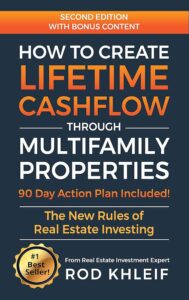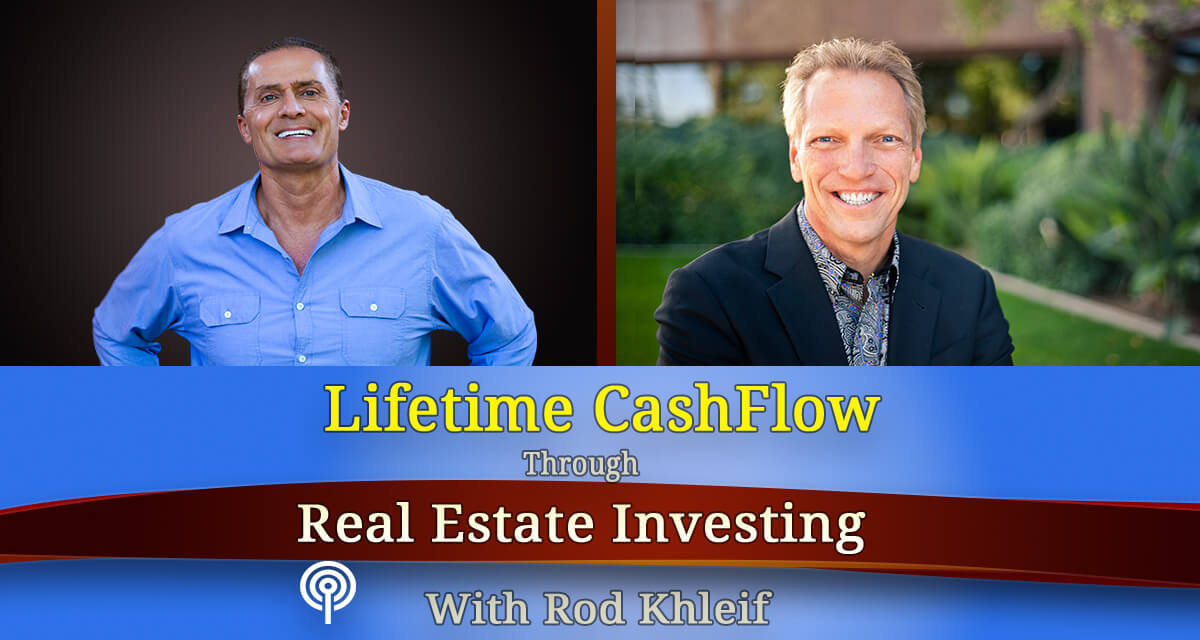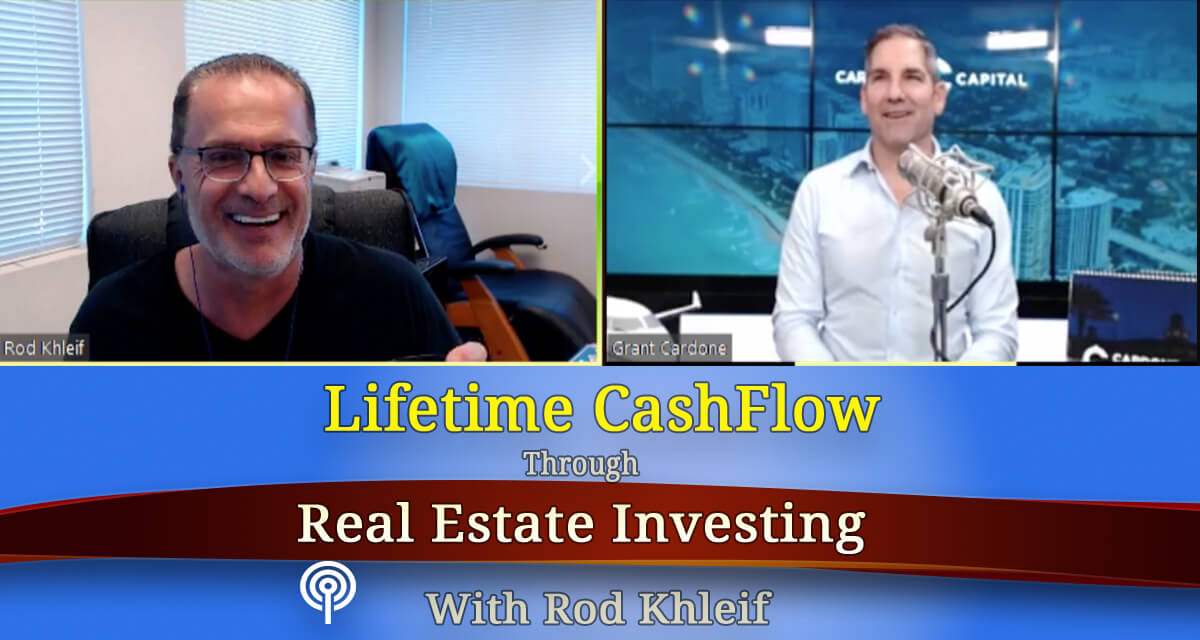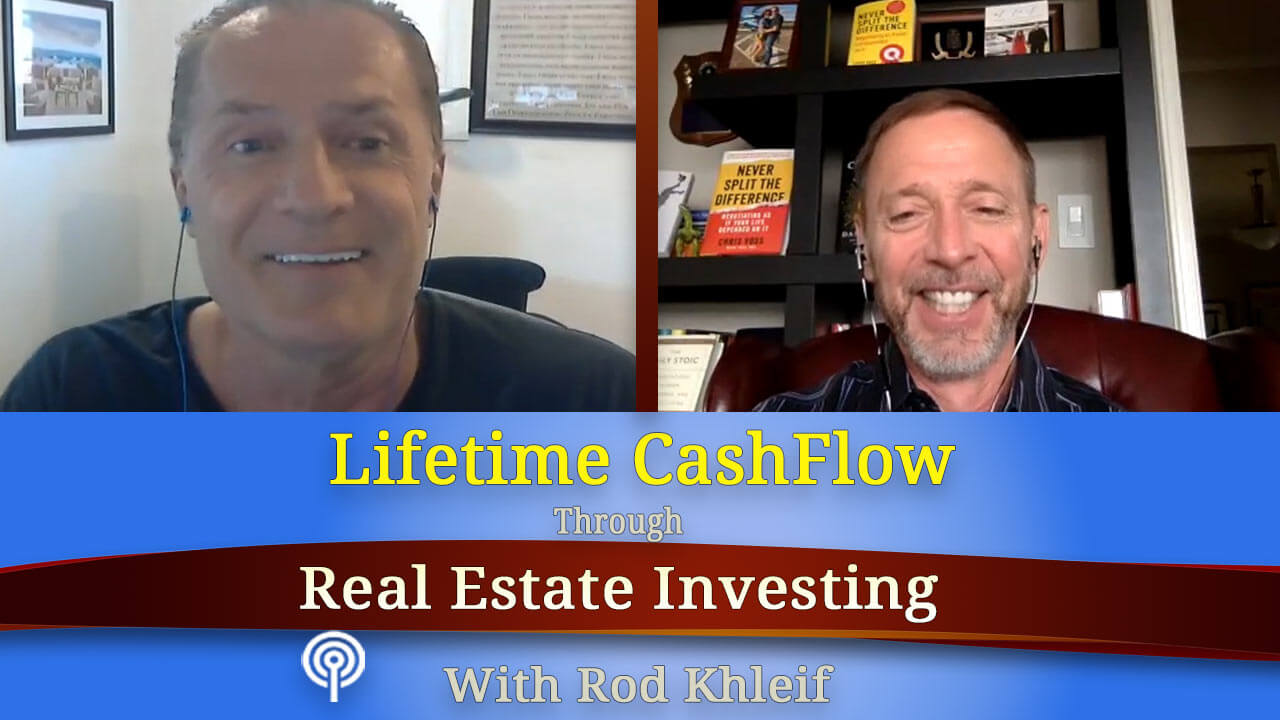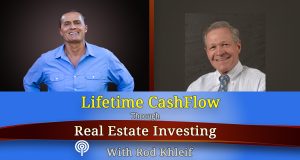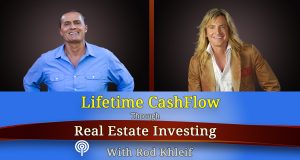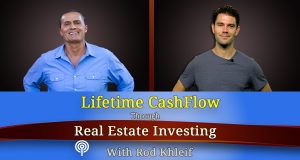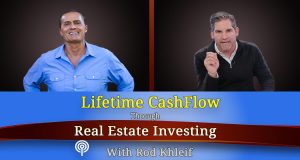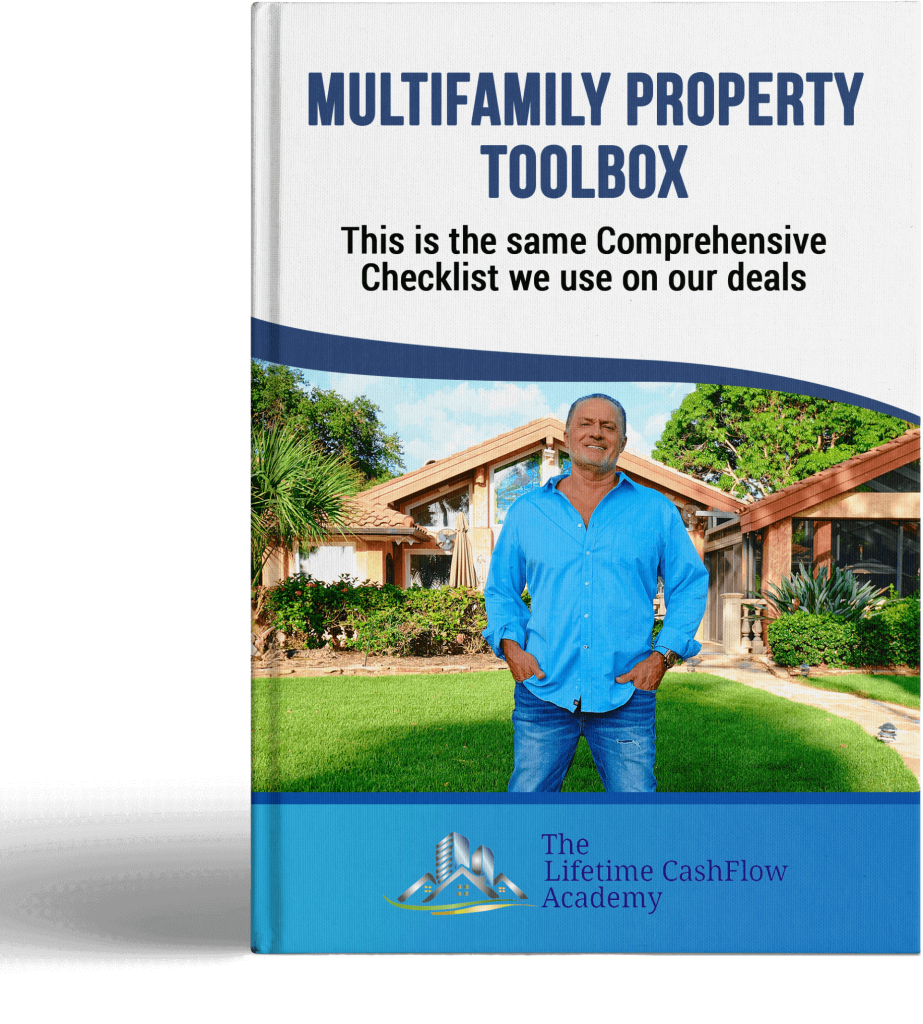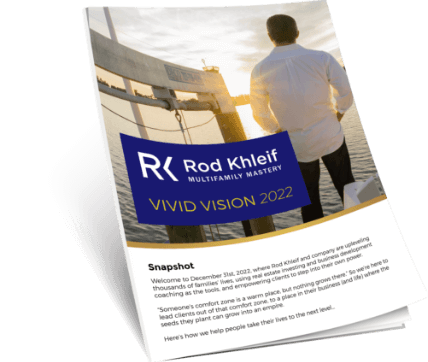Ep #575 – 1 Million Followers author Brendan Kane – Building reach for Multifamily Investing
Brendan Kane is an outside of the box thinker, speaker and author who empowers brands to scale by helping them stand out and beat competition in crowded and oversaturated markets. He is the author of the international best-selling book One Million Followers and the newly released Hook Point: How To Stand Out In A 3 Second World , as well as the founder and CEO of the Hook Point agency. Brendan has worked with hundreds of individuals and brands providing business and digital strategy for more than 15 years, including MTV, Taylor Swift, Rhianna and many others.
Here’s some of the topics we covered:
- Content is king
- Grabbing attention
- Holding attention
- Recognizing patterns
- Understanding the one to one connection
- Contextualizing information
- The noise of ecommerce
- “Nobody Cares”
- Lead with pain point
Full Transcript Below:
Rod: Welcome to another edition of How to Build Lifetime Cash Flow through Real Estate Investing. I’m Rod Khleif, and I’m absolutely thrilled that you’re here and you’re going to get tremendous value from the gentleman we’re interviewing today. And it’s a little bit of an unusual conversation because he’s not a real estate operator. He’s a best selling, actually, international best selling author. And he writes about how to create reach and how to build a presence and scale social media. And he’s the author of international best selling book, “One Million Followers”. And he just released a new book called “Hook Point: How to Stand Out in a 3-Second World”. So his name is Brendan Kane, and I’m very excited to get into this interview with him. Brendan, welcome to the show, brother.
Brendan: Yeah, thanks for having me. It’s a pleasure to connect with you and everybody that’s watching or listening to this.
Rod: Yeah. Thank you. So maybe you can talk for a little bit about your first book, “One Million Followers” and let’s just– and, or your progression into how you got to that book and then we can just take it from there, if that’s okay.
Brendan: Yeah, so how I got to the book is, it’s not like I just woke up one day and just figured I was going to do this. I mean, my experience in social media extends all the way back to 2005. So I started off actually in the film industry and wanted to be a film producer. So I ended up going to film school hoping that they would teach me a little bit about the business of the entertainment industry and just business in general. And when I showed up, I quickly realized they teach you nothing about business there. So I figured there had to be a way that I could learn while I was going to college. So I created a few internet companies as I was studying to really just learn and experiment. And then when I moved to L.A. to pursue a career in film, this was back in 2005. It’s when the entertainment industry started reawakened to digital after the combust. So basically just leverage that knowledge and creating those internet companies to grab the attention of big studio executives, directors, producers, so I could quickly move from making coffee to building digital divisions in that industry. And I just continue down that path and from there, I started building technology platforms around social media, website building applications and licensing them to big media companies. So I did partnerships with MTV, Viacom, Yahoo, Paramount, Lionsgate, you name it. And then from there, I started getting very deep into paid advertising space and helped build one of the largest social paid advertising firms in the world. And that experience, when we were kind of running ad spend for and like Facebook, Instagram, YouTube for Fortune 100 companies, it was really eye opening. So I would see these companies come in with a piece of content. They would spend hundreds of thousands, in some cases millions of dollars on, and then they’d want to spend millions of dollars against that piece of content with a core demographic. And I would always ask them, well, how do you know this piece of content is going to resonate with this audience to essentially investing all this money into it? And nine times out of ten, they didn’t have the answer. They were just working off of creative hunches. And this is a recurring theme that I would see over and over and over again. And sure, for a Fortune 100 company, you can make those big bets and lose a bunch of times and not really impact your bottom line. But it’s not a long term strategy. And honestly, nobody really wants to lose big and even if you’re a Fortune 100 company. And then also the people that don’t have that budget can afford to make those types of bets. So I knew that there had to be a better way of going about it. So I started creating a set of testing methodologies and predictive calculations on top of Facebook and Instagram to be able to really test content at scale and understand what content, formats, themes and trends work. And I went back to working with corporations and brands, and we’re seeing success hitting their key KPIs, which was primarily awareness, share ability, traffic acquisition. And then I started getting approached by celebrities, journalists and professional athletes asking if I could use the same methodologies but use it more so for audience acquisition, specifically follower base. So I started running tests and using the same principles that I had created for these big brands, and I started seeing success with it and started seeing data coming from all over the world and getting a firm understanding of what it takes to get somebody that knows nothing about you to follow an account. And that’s where it seeded this idea in my head of, Okay, it’s great that I worked with the biggest brands and celebrities on the planet, but could it be done for somebody starting from scratch, somebody starting from zero? And, you know, I just, you know, the idea popped in my head and I knew it was possible because I had spent three and a half years building these processes of generating a million followers in 30 days. But it was a matter of if I could do it, it was why I should do it. And I had wanted to do a book for the longest time because I was inspired by how Tim Ferriss built his brand with “The 4-Hour Workweek.
Rod: Right.
Brendan: So I called up a literary agent that I knew that represented five billion dollars in book sales. And I just said, listen, I have this concept for generating a million followers in 30 days. I think it’s a solid hook for a book. Would you sign me as a client and get me a publishing deal? And he said, yeah, I’ll do it. So that’s kind of how and why I generated, you know, the first experiment of a million followers in 30 days.
Rod: Wow. Wow. And it became an international bestseller. So, and I know you’ve– and I forgot to mention in my introduction of you forgive me, I mean, you’ve worked with some big names, Taylor Swift, Rihanna. You know, you mentioned some some of these big, big media companies that you’ve worked with, movie houses. Very impressive. So and guys, why are we talking about this? Because you have to reach in the multifamily space. You’re probably wondering why is it, you know, Rod lost his mind. Why is he got Brendan on the show? Well, this is why. Because, you know, you’re going to be out there and you’ve got such an incredible opportunity to create reach, you know, that I didn’t have when I first started out in this business 40 years ago. You’ve got social media, but you need to maximize it. And that’s why I thought Brendan and guys, you definitely want to get his book, “One Million Followers” and his new one, “How to Stand Out in a 3-Second World”, because I don’t know about you guys, but when I’m watching a movie, I’m sitting here scrolling through my feeds on Instagram and Facebook and if you’re not standing out, you’re going to get scrolled past. So anyway, so let’s go back to “One Million Followers” first. And can you talk about some of the strategies that you utilized? Because I know you’ve– before we started recording, you’ve talked about, you know, literally through some numbers out on how you’ve helped people or could you repeat what you said before we started recording about how many millions of, you know, followers you’ve helped people create?
Brendan: Yeah, it’s when people look at the title of the book, they just think, oh, we just did it for my profiles.
Rod: Right.
Brendan: And it was done. But no, I mean, collectively, between myself and my team, we’ve amassed and I don’t keep track, but it’s well over 50 million followers, maybe more than that.
Rod: Wow.
Brendan: 50 billion views. And then even just the people in the book, it’s collectively, it’s another hundred million followers and tens of millions, billions of views. So it’s not just, oh, it’s me and this guy that just ran this one experiment on myself and that’s it. We’ve used these principles and methodologies over and over again. And these methodologies apply to any industry like we work with people in every sector. We work with, you know, real estate companies. We work with real estate developers. We work with nanotechnology, vitamin supplements, fashion, music, film. So it’s, there’s not a single industry that we don’t touch and there’s not a single industry that it can’t work for. But with that said, I’m not going to sit here and say that it’s easy. You know, people take a look at the book and it’s how I built a massive audience in 30 days. Does that mean that everybody, because of the book, is going to get a million followers? No, it’s not, because it takes work. And the biggest contributing factor of your success or lack thereof is your content. Content is everything. If you don’t create effective content, then you’re going to struggle to stand out. And even if I gave you a million followers tomorrow, if you don’t have your content out, then you’re not going to reach those followers because the algorithms are very strict about who they seed content to because they have a very difficult job. Their job is how do I keep people on these platforms longer? That’s the sole purpose of them. It’s not. Well, how do I get you to pay more? That’s not it, because they have plenty of advertisers. The key is how do I extend the session duration long enough that I can seed more ads to fulfill the inventory demand that we have for all these advertising clients. So with that said, your job as a content creator is how do you play to what the algorithms are looking for, which is keeping people on the platform longer. So if you want to be good at social media, whether it’s paid or organic, you have to master just two things. The two things are very simple, but they’re not necessarily easy to pull off. Number one, can you grab the attention? Can you stop the scroll in the terms of Facebook, Instagram, Tic-Tac, LinkedIn, or in the case of YouTube, can you earn the click to people? Click on your thumbnail and headline? That’s the first thing that you have to do. If you don’t do that, if the algorithm sees that your people are going past your content or people not clicking on it, they will automatically suppress it. So that’s number one. Number two is once you’ve grab their attention, how long can you hold that attention for? Because we’re not talking about click bait here, we’re not talking about tricking people, we’re talking about actually providing value or entertainment or engagement. So you then have to hold that attention or what we look at as the retention graph of our content to determine how long we can hold it. So that is the second signal for the algorithm. If you can do those two things, it doesn’t matter what change the algorithm has, you will master social media and you’ll master social media on every single platform. Again, it’s very simple, but it’s not necessarily easy. So that’s where the content comes in. Whether you’re trying to generate a follower, a click, a lead, a sale, how does it first grab that attention and then how long does it hold that attention for? Because the reality of the situation is the world we live in. There’s over 60 billion messages sent out on digital platforms each day.
Rod: Wow.
Brendan: It’s extremely noisy. And, you know, it whether you’re in real estate or e-commerce or vitamin supplements or music, it doesn’t matter. You’re no longer just fighting against your direct competition. You’re fighting against every piece of content for that attention. So like it or not, whether you’re doing paid or organic, if you’re going after Instagram and somebody, your core customer, just watch Lebron James dunk, watch Kevin Hart tell a joke or watch the Netflix trailer and then your content comes up. How does your content stack up to, again, grab the attention and then hold that attention?
Rod: Can you give some examples? Can you give some examples of successful grabbers, for example? I mean, just can you throw some things out?
Brendan: Yeah, I mean, there’s so many different examples, if we talk about, you know, real estate, for example, you know, we’re working with one of the largest real estate companies in the world right now. So we’ve done in-depth analysis primarily on the residential side. And I know there’s a lot of, you know, commercial and multifamily home. But we’ve been doing a lot of analysis of the residential side of things and you see very clear patterns. And that’s the other big thing, is to in order to grab attention, you have to first see the pattern so that you can disrupt that pattern. So the patterns are very similar. When we look at real estate, it’s like just listed, just sold, the same kind of basic imagery. Oh, this has five bedrooms, five bass, you know, a thousand square feet and the same formats, the same structures, and they’re all underperforming. But if you look at somebody, for example, like Ryan Serhant, who’s master kind of social media, who’s on that Bravo show, Million Dollar Listing as well. But he did something really fascinating where he broke that mold and he started, you know, bringing consumers on these tours of these amazing places. So he’ll go and tour a three hundred million dollar property or a seven million dollar closet, you know, a penthouse with like the largest pool. Things like that. But he’s doing it not to boast, not to sell that property, although he does sell properties through that. But he’s taking the consumer or the viewer on a journey. And if you watch any of his content, he is speaking to you as if you were the only person on the other side of the screen. And that’s a big mistake that people make. As you’ll see, a lot of people say, hey, everybody, hey, y’all. That is not what social media is about. It’s about this one to one connection. And that’s what Ryan has done so well. He’s in– I’m going to use this word “Hook Point”, which is my whole premise of the second book.
Rod: Right.
Brendan: But he uses a “Hook Point” of connecting with these consumers and kind of showing them behind the scenes of these amazing properties that they would never see. And they’ll generate millions and millions of views. But he knows that 99.9% of the people watching it will not be able to afford it.
Rod: Right.
Brendan: But that point zero one percent is watching and he has sold like ten million dollar penthouse is off a YouTube video because of that.
Rod: Wow.
Brendan: So what he’s doing and what we talk with our clients a lot and we can talk about the difference between paid and organic. So right now, I’m talking really about organic.
Rod: Right.
Brendan: But what we tell our clients always when it comes to organic, if you really want to scale your brand and awareness through organic, you have to make your content digestible for the general audience. Meaning, if somebody knows nothing about multifamily homes, how do you make it interesting for somebody that isn’t interested in it? And you may be sitting there, well, how do you do that? It’s impossible. Well, Ryan Serhant, one example, but I’ll give you a better example.
Rod: Okay.
Brendan: Taxes, it’s the most unsexy subject you can imagine.
Rod: I just fell asleep. Right.
Brendan: Exactly. But there’s a YouTube channel called “Clear Tax Value” that is blown up. They got 1.2 million subscribers. Their average video views is like three or to four hundred thousand views, which is hard to do on YouTube just alone.
Rod: Right.
Brendan: Let alone around taxes. So you can make any industry interesting. And there’s like World Economic Forum does a great job with this. So that’s what we look at from an organic perspective. Now, you may not want to be the Ryan Serhant. You may not want to do that because it is hard work. It is time consuming. It is valuable if you pull it off.
Rod: Right.
Brendan: Or you can go the paid route. Lead generation, we do a lot with lead generation, which is a bit easier from a content perspective, because essentially what you’re doing is you’re paying for reach instead of hoping that the algorithms will give you that reach for free and I– free, I almost say in air quotes because it’s not necessarily free because of the time, energy and effort that it takes to create the content.
Rod: Right.
Brendan: But with paid acquisition on these platforms, you pay to get that reach. So it takes off that, you know, the biggest obstacle there first. Now there’s two principles still apply for paid, is like, how do you get somebody to stop and pay attention to it? And then how long can you hold that attention for or can you translate that attention to a landing page or someplace else where they’re finding more information? So there’s like two types of ads that will do is, one, where we’re holding the attention within the ecosystem. So if it’s like a Facebook or Instagram ad that can come in the form of the video. So we’ll have a video ad and we grab the attention with a pattern interruption of the way that we intro the video or the headline or something like that. And then we’ll work to hold that attention as long as possible because it’ll drive down our costs in the auction. But then there’s other ads, what we’ll do is, like if people have seen some of my ads or go to my Facebook ad library, we’re using visual effects of like one million followers. You see somebody pound their fist on a book and all these emoticons of likes and comments and things come out of the book and we push it over to the side of a phone and show the followers grow or the latest book we– one of the ads that we have, it’s doing really well for Hook Point is I licensed the video of a shark with its mouth open and we inserted the book in the shark’s mouth. So those ads are more about how do we grab the attention? And then we say, go to the landing page to learn more. And then we hold the attention with the content on that page and then make the transaction. So it’s really important for you to understand or an important decision for you to make of like what are your real goals here? You know, are you looking to generate leads in investors or revenue today or are you looking at that long term play of what social media can do from a brand perspective?
Rod: Let me– if I can stop you for one second. Forgive me for interrupting. So for my listeners, it would be to build that reach via, you know, getting investors, potential investors interested in who they are. But then, of course, it’s a long term game. They’ve got to keep that list warm. They’ve got to educate that list, entertain that list, whatever it is to keep that list warm. So it’s kind of both. I just wanted to throw it out there for my listener base. That’s what it would be, is both.
Brendan: Yeah. And it’s a great question. And there’s two ways to go about that. There’s the paid and the organic. And the first thing you have to understand is nobody cares who you are.
Rod: Right.
Brendan: With Ryan Serhant people. He’s not successful because they care who he is. The “Clear Tax Value” guy is not they don’t care who he is. It’s the way that they’re contextualizing their industry, the information, the value that they’re providing that brings people in. And then through that, people will start caring. But people get this misconception that people are going to care right off the bat. They don’t. I mean, there’s so much noise out there. And there’s two analogies I’ll give you to express this in different industries is, if you remember Blockbuster?
Rod: Oh god. I was just listening on Tim Ferriss to the one of the founders of Netflix. And that number I heard, I don’t want to steal your thunder, but they tried to sell Blockbuster to Netflix. I’m sorry. Other way. Yeah. No other way around. Netflix tried to sell it a Blockbuster for 50 million and now Netflix is worth 250 billion.
Brendan: Yeah. So if you think back to the Blockbuster days, you walk in the store, how many movies they have? A few hundred max.
Rod: Right.
Brendan: You go to Netflix, there’s 50 thousand titles. Now if you think before Amazon where you have to go to the store, you walk into a store maybe or walk into a mall, maybe there’s a few thousand products. You go to Amazon, there’s 365 million products.
Rod: No kidding. Wow.
Brendan: So that’s kind of the world that we live in. And that’s what you have to understand when you’re creating content, is so many people get caught up when they create content of making a mistake. It’s about me of what I want to say, what I want to get across. Nobody cares. I hate to break it to you. But like the, you know, one of my friends, that’s the strategy officer of like one of the largest viral video companies in the world. They always say to their clients and they also say it internally is why the fuck should anybody care about you or your product before making the video? Because that’s really where it is and that’s where it’s like where you say getting to know you and caring about you. You can do it, but you can’t lead with that. Nobody really cares about you as an individual. And you think about this even with celebrities and movie stars, like the most, I think followed person on the planet is “The Rock” right now or you think about like a Kevin Hart or something is people look at that and say, oh, they grew that organically or they grew because they love the person. No, in every movie they’re in the marketing budgets between 50 to 150 million people. They go in because of the movie or like “The Rock” start in WWE. They did like a ton of promotion there to bring people into, then get to know the personality. So they lead with the movie, not with the actor. They lead with the character. They lead with the story. And that’s what you have to do here either paid or organic is, and one of the questions that I ask clients is what keeps your core customer up at night? What is their greatest pain point? And then you can lead with that, because oftentimes the biggest mistake people make is, they lead with what you believe they need, but they may not know they need it, so you’ve got to start with what they want to take them to where they need. So the prime example of this is my first book, “One Million Followers: How I Built Mass Social Audience in 30 Days” that was designed on purpose. Everybody wants, I don’t wanna say everybody, but a lot of people want followers or a lot of people want to master social media. But I knew that that was what they wanted. But I knew in order to be successful social media, what they need is to understand the psychology of content, how to communicate effectively, how to AB test content on social platforms, strategic alliances and partnerships, traffic– tapping into different traffic sources. But if the title of my book was, The Art of AB Testing on Social Media Platforms, would it work?
Rod: No.
Brendan: Nobody cares. But if I start with “One Million Followers: How I Built A Mass Social Audience” and I start off by saying, listen, if you really want to master social media, do you want followers? You want to generate revenue through it. These are the things that you need to master. You’re far more open and receptive to it. So it’s tapping into what your core audience, your investors really want as the lead in before you get into what they need to really know.
Rod: That’s a great, great– I mean, I’m furiously scribbling notes because, you know– so, are there some strategies around determining what that is? I mean, like, for example, I’m equating it to my thought, leadership business where we’ll send a survey out and say, you know, what are you struggling with? I guess that would– so you have to really put yourself in the shoes of the investor and maybe it’s retirement. Maybe it’s wanting to have enough passive income to be able to leave their job. So, you know, I guess you could do some, what do they call it when they put people in a room and ask them their opinions?
Brendan: Market research.
Rod: That market research. Yeah, I suppose you do that or you just–
Brendan: You can you can do that. But also, again, these platforms that give you the ability to test all these things.
Rod: Yeah.
Brendan: Like your own market research firm. Like you literally could go and test ten different pieces of creative in 48 hours you’re going to know which pain point is the strongest.
Rod: Yup.
Brendan: So, but you have to start that way and think that way. But you can also do it offline. You can ask people, you can do surveys, you can talk to perspective clients of, you know, why they did decide to invest, why they didn’t. What are the greatest challenges or stress points in their life, things of that nature? There’s many ways of doing it, but you’ve got to really think in that way.
Rod: You know, I noticed something for me, and that is the effectiveness of negative headlines. Like I did a YouTube video. My most watched YouTube video was “The Coming Real Estate Crash of 2021”. You know, that fear, pain, negative headline. Although I think I’m going to be wrong, it’s not going to crash this year. It’s probably going to be another year or two. But anyway, how do you feel about that from a strategy to utilize that some negativity to hook them in?
Brendan: You don’t have to do it. Like, people say that. People are like, oh, it’s negative, it’s girls in bikinis, all that stuff. But it’s like, I can show you examples of both sides. I can show you examples of negative headlines completely bombing. I can show you examples of positive stuff completely succeeding. It’s the way that you contextualize it. It’s the way that you execute it. Like our book, “One Million Followers: How I Built A Mass Social Audience In 30 Days” is positive. I don’t think we really do any negative marketing or negative things. The person that wrote the book, that wrote the forward for the first book, his name is Prince Ea. He’s one of the top video creators in the planet. And it’s all positive. It’s all positive, inspirational content. Jay Shetty, he’s another example of that Goalcast. Are there examples of people that use negativity? Yes. I don’t like doing it. Doesn’t personally– it’s not personally in my kind of– it doesn’t inspire me or motivate me to create content. But you can do it either way. So don’t feel like you have to be put in that corner.
Rod: Okay. No, that’s really good insight. I didn’t intend it that way. It was just surprising when I saw that that headline did as well as it did. Now, so when you’re getting there attention, let’s shift to the, you know, how to stand out in a three second world. You’re talking about those grabbers. Is it a printed headline, you know, right when the video starts or is it a picture or is it a combination of all sorts of things? I’m just curious what has been really effective? Is it just the messaging? I’m just curious if you could give us a little more micro answers there that– if you would.
Brendan: Yeah. So a hook point at its highest level is grabbing attention and maintaining attention. So those two core principles that we talked about earlier that are critically successful social media. Now, hook point can come in many ways, shapes or forms. It can come in the form of text. It can come in the form of the image. It can come in the form of video. It can come in the form of a business development strategy, like a unique approach to grab attention. It come in the form of an email, subject line or email, text or body. It’s really anything that allows you to grab the attention of the audience that you’re trying to attract, hold it to the point where you can build up enough trust and credibility to then get them to perform the specific action that you’re going after. So that’s in a nutshell, what that looks like.
Rod: Do you have a super successful example of one of those that you could share? It doesn’t have to be real estate specific or just one that just blew the socks off or one or two, you know, examples that people can relate to or, you know.
Brendan: Yeah, I mean, there’s so many. I mean, Ryan Serhant, if you go to his YouTube channel and sort by that. Netflix was another prime example. You know, people don’t realize that Netflix invests 17 billion dollars a year in content. Why? Because each piece of content is a hook point. And they know that, you know, if 95% of the bets don’t pay off, they can still survive for every stranger things that they hit or orange is the new black that drives their business. It builds their acquisition channel and it also builds their retention side of things. So that’s one example. I can give you another example along with what to be careful with, so Tom Shoes, they created one for one. For every shoe that you buy, they donate. So that’s an amazing hook. The problem is, it was such a good hook and they stopped innovating their hooks that everybody else started doing it and everybody else started doing the one for one and then it lost its edge. Amazon’s another huge one. You know, they started with the world’s largest bookstore. That was their first hook. Then they think it was the store for everything. And then it was the one click checkout. And then it’s Amazon Prime. And now they’re in the content business and people think they’re in the content business because they want to be Disney or these people. It’s not. It drives prime memberships and prime membership increases the amount of product that’s purchased through that platform. The “One Million Followers” book is another one. If you look at my Facebook ad library, we’re testing different hooks all the time. You look at Nike, they spend six, seven billion dollars a year on endorsements. So Lebron James, Michael Jordan, look at what Michael Jordan did for Nike. Those are hooks into their brands. There’s so many different ways that you can go about it.
Rod: Now, do you have other than the books, do you have a course or any other programs? I know you do high level consulting. I guess where very large companies, is that accurate? Or–
Brendan: Yeah. So we have a consulting practice where we help companies create their hooks.
Rod: Okay.
Brendan: So we look at their short and long term business objectives. We look at the competitive landscape and then we help them craft a hook point to achieve those goals. And again, that hook point can come in many ways, shapes or forms. It can come in forms of a business development strategy, a social media strategy, a single piece of social content page strategy, just depends what it is. So we have that consulting practice and we do have a course around hook point as well.
Rod: Oh, you do? Okay, fantastic. Well, guys, I highly recommend you get his two books, “One Million Followers” and the “Hook Point: How To Stand Out In 3-Second World”, because again, you need this. You need to be able to be seen. So you’re not killing yourself to bring investors into your deals. But listen, Brendan, I really appreciate you taking the time to share your wisdom. You’ve added tremendous value today. I’ve been, like I say, it’s not often that I’m furiously scribbling notes down, but very much appreciate you taking the time to join us today, my friend.
Brendan: Yeah. Thanks for having me. It’s a pleasure to connect with you and everybody. I was listening to this.
Rod: Yeah, thanks.




